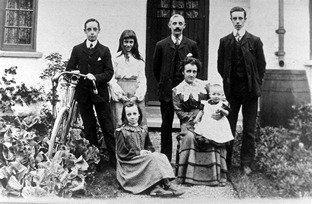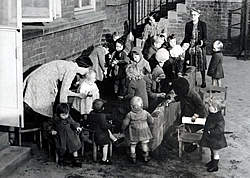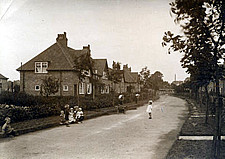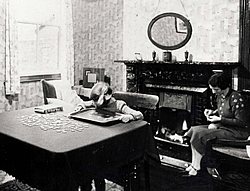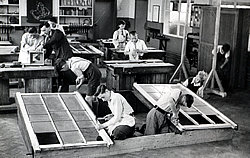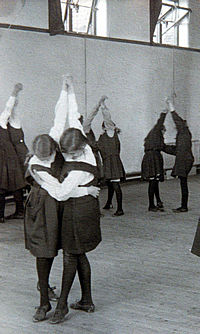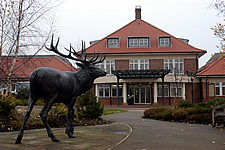In 1905 the first baby born in New Earswick is the youngest of five. Fifty years later, the size of the average family nationally has halved but the number of families has doubled. By 2003, one in four children lives in a one-parent family; single pensioners live in one in seven homes.
Have the challenges we face changed as we move from childhood to youth, through parenthood to retirement?
Childhood
With its open spaces, three-bedroom houses, gardens and modern Primary School, New Earswick is originally planned with families in mind. But by the twenty-first century the family has changed. 65 per cent of children still live with both their natural parents. But 10 per cent of couples are cohabiting and 10 per cent of children live with a step-parent.
In 1997, the cost of bringing up a child is estimated at £50,000. With nearly a fifth of children living in workless households, tackling child poverty remains a key issue.
And by 2003, children are no longer seen but not heard. The 1989 Children Act and the 1998 Human Rights Act bring children new rights. New work looks at hearing the voice of the child, particularly in family breakdown.
Youth
In 1901 child employment is a great concern: nearly 900,000 children aged 10 to 15 are at work. By the end of the century, youth unemployment is a big issue, with particular challenges for young men as the workplace changes.
The school-leaving age is raised to 16 in 1969. By 2003, more young people than ever before are going on to further education, but not all have equal access. Those without any qualifications and training find themselves increasingly disadvantaged.
Some young people become young parents: Britain has the largest number of teenage pregnancies in Europe. Teenagers’ relationships with their own parents have changed. But it’s not always clear where parental responsibility ends and that of the government starts.
Debate in the 1940s about anti-social behaviour in New Earswick shows how long tackling this issue has been a concern. By the turn of the century, young people face temptations from drugs and alcohol, which would have greatly worried Joseph Rowntree, for whom the temperance movement was a core concern. In 2003, a new research programme on drugs and alcohol focuses the Foundation’s work in this area.
Greater material wealth in the country as a whole has not necessarily made young people happier. Education, work, marriage, parenthood – these are no longer landmarks: the route to becoming an adult has become much less clear-cut.
Adult life
In 1901, less than one-third of women are working outside the home. In 2003, the JRF Family and Work programme concludes that the average household with children now needs one-and-a-half earners to achieve what most consider an acceptable standard of living. The world of work has also changed.Working mothers face particular challenges and benefits. Fathers have new roles and new attitudes too.
From the 1970s changes in the divorce laws herald three decades of change in family make-up. The 2001 Census shows that 11 per cent of non-married couples have children and just over a fifth of households are headed by a lone parent. An extensive JRF programme of work in the 1990s looks at the new challenges for family and parenthood.
But not all adults become parents. Reports in the 1990s show more women choosing childlessness. The rise in single-person households has implications for planning, the supply of homes and care.
Retirement and beyond
Life expectancy increases throughout the century. The 1901 Census records 262,175 retired people. The 2001 Census finds around 336,000 people aged 90 and over. For the first time, those over 60 outnumber those under 16.
Before 1909, those who can no longer work often face a stark choice between destitution and the workhouse. Full National Assurance isn’t introduced until 1946. Today there are concerns about whether pension provision is sufficient for an ageing population. Just as becoming an adult has become more complex, older people no longer follow a clear path from work to retirement. In 2003 the JRF programme on Transitions after 50 examines their dilemmas. Many people in their fifties find they are caring for both their children and their own parents. And the 2001 Census reveals 4,000 of the Millennium’s ninety-year-olds are spending 50 hours a week providing care for a family member or friend.
But older people intend to keep their independence and new ways are being found to help them do so. They may want more say over the services they need. Built by the Foundation, Hartrigg Oaks – the UK’s first continuing care retirement community – offers a new model of care nearly 60 years after the first older people’s cottages were built in New Earswick.
Find out more about the Foundation’s current research priorities and how it is working to effect change.

